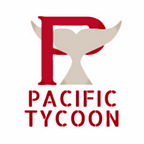Container Shipping Undergone Big Changes in Last Few Years
Container shipping has undergone significant changes in the last few years, resulting from overcapacity, fluctuating freight rates, and rising fuel costs.
The international container shipping industry has undergone significant changes in the last few years. These changes were the result of pressures brought about by overcapacity, fluctuating freight rates, and rising fuel costs.
Overcapacity
The most admirable of the industry’s changes has been the partnerships and alliances established between container shipping lines that were once fierce competitors. Perhaps the best example of this approach is the newly formed ONE alliance. This partnership is comprised of Japan’s top three container shipping lines, Kawasaki Kisen Kaisha (K Line), Mitsui O.S.K. Lines (MOL), and Nippon Yusen Kabushiki Kaisha (NYK).
Also enjoying the benefits of forming container shipping alliances, other industry giants — like Maersk Line and the Mediterranean Shipping Company — have forged their own vessel and slot sharing agreements. This movement has given birth to the 2M alliance, OCEAN alliance, and THE alliance. Based on the current Alphaliner ranking of all container shipping lines, the three previously mentioned partnerships collectively account for 79% of the global container market.
Freight Rates
Owning an extensive fleet of shipping containers requires an enormous financial commitment from shipping lines. This cost, as well as any other operational expense, is expected to be recovered in freight rates. However, with so much inconsistency in the price to transport a container, many shipping companies are looking to eliminate expenses related to the maintenance of their shipping container fleet.
This change in thinking has seen the emergence of container leasing companies and investment-seekers who are investing in containers themselves. In these circumstances, container shipping lines will lease the containers they need from a leasing firm (partnership), thereby transferring the financial responsibility of monitoring and maintenance outside the shipping company.
Fuel Costs
Similar to container freight rates, fuel costs are inconsistent and unpredictable. This creates a challenge for officials who are charged with projecting operating expenses and predicting profit.
To address concerns over rising fuel costs, and their effect on operational expenses, many shipping lines had to change their way of thinking. Nowadays, they are relying upon a combination of industry innovation and vessel and slot sharing (partnerships and alliances), as well as sailing techniques — such as slow steaming, to manage the costs of fueling their fleet of shipping vessels.
Conclusion
Today’s container shipping companies have learned to adapt and overcome obstacles, foremost by making strategic changes to the way they conduct their business. This could not be more evident than in the partnership and alliances that have been formed by industry leaders, to address the enormous economical challenges faced over the last few years.
